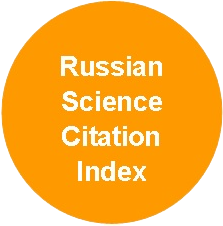Improving the Efficiency of Using Plywood Production By-Products
DOI:
https://doi.org/10.37482/0536-1036-2025-3-155-168Keywords:
plywood production, plywood production waste, gas cleaning unit, boiler, biofuel, harmful substances, efficiency, combustion residueAbstract
To use plywood production waste to generate energy ensuring the operation of the non-public limited liability company “SVEZA Ust-Izhora” a mini-heat-and-power plant with 2 Е-40-2.25-305ОP boilers and a turbine has been installed. A 2-stage ash clearing of combustion products has been provided. The 1st stage ensures the removal and return of coarse fractions to the vibrating grid. At the 2nd stage, the products pass through bag filters. An energy inspection of the boiler units has revealed that the gas cleaning system is the cause of their frequent shutdowns and starts, additional heat losses and a reduction in the equipment life cycle. In this regard, instead of bag filters, a dust and ash collection complex (KPZU-10×6×2) has been installed. However, the degree of solid particle capture by the complex has been no more than 80 %, ash has been observed sticking to the impeller of the smoke exhauster, which has caused and imbalance and a reduction in the life cycle of the smoke exhauster and the need to stop the boiler at least once a week. The aim of this article has been to establish the reasons for the increased emissions of solid particles and carbon monoxide, the limited period of operation of the boiler unit between cleanings, as well as the lack of the possibility of prompt removal of ash and slag to the landfill. A comprehensive analysis of the boiler unit operation has been carried out on the basis of the operational and environmental performance indicators of the boiler, thermal engineering and granulometric characteristics of samples of the combusted biofuel and the resulting focal residues, as well as their elemental composition and thermogravimetric characteristics for plywood chips. The modernization of the gas cleaning complex has ensured the functioning of the boiler with a nominal steam capacity and has reduced the number of its stops between cleanings by 7–21 times. However, the use of a boiler with a higher capacity has lead to an increase in the polydispersity of fly ash and the content of combustible substances in it, which has become one of the reasons for its smoldering in the collection container. Periodic switching on of the vibrating grid has resulted in significant instability of environmental indicators. A study of the polluting potential of plywood scrap ash has found it to be the most powerful polluting component in the combusted mixture. The study of thermal processes in plywood chips in air and inert environments has shown a noticeable influence of the presence of glue based on phenol-formaldehyde resin.
Downloads
References
Бирюков В.Г. Технология клееных материалов и древесных плит. М., 2012. 292 с. Biryukov V.G. Technology of Glued Materials and Wood Boards. Мoscow, 2012. 292 p. (In Russ.).
Бобович Б.Б., Девяткин В.В. Переработка отходов производства и потребления. М.: Интермет Инжиниринг, 2000. 495 с. Bobovich B.B., Devyatkin V.V. Recycling of Production and Consumption Waste. Moscow, Intermet Inzhiniring Publ., 2000. 495 p. (In Russ.).
Варанкина Г.С., Чубинский А.Н. Основы комплексной переработки сырья. СПб.: СПб ГЛТУ, 2016. 56 с. Varankina G.S., Chubinskij A.N. Fundamentals of Complex Processing of Raw Materials. St. Petersburg, St. Petersburg State Forest Technical University, 2016. 56 p. (In Russ.).
Волынский В.Н. Технология клееных древесных материалов. Вологда: Инфра-Инженерия, 2022. Т. 1. 340 с. Volynskij V.N. Technology of Glued Wood Materials. Vologda, Infra-Inzheneriya Publ., 2022, vol. 1. 340 p. (In Russ.).
Головков С.И., Коперин И.Ф., Найденов В.И. Энергетическое использование древесных отходов. М.: Лесн. пром-сть, 1987. 224 с. Golovkov S.I., Koperin I.F., Najdenov V.I. Energy Use of Wood Waste. Moscow, Lesnaya promyshlennost’, Publ., 1987. 224 p. (In Russ.).
Дубинина Н.Н., Орлов А.А., Корчук Ю.А., Лях Н.И. Энергетическое использование древесных отходов лесопильного производства // Актуальн. проблемы лесн. комплекса. 2016. No 45. С. 17–21. Dubinina N.N., Orlov A.A., Korchuk Yu.A., Lyakh N.I. Energy Use of Sawmill Waste. Aktual’nye problemy lesnogo kompleksa, 2016, no. 45, pp. 17–21. (In Russ.).
Жучков П.А. Тепловые процессы в целлюлозно-бумажном производстве. М.: Лесн. пром-сть, 1978. 408 с. Zhuchkov P.A. Thermal Processes in Pulp and Paper Production. Moscow, Lesnaya promyshlennost’ Publ., 1978. 408 p. (In Russ.).
Колесникова А.А., Будаев В.А. Технологические расчеты в производстве фанеры: учебное пособие по курсовому проектированию. Иошкар-Ола: ПГТУ, 2010. 108 с. Kolesnikova A.A., Budaev V.A. Technological Calculations in Plywood Production: Tutorial on Course Design. Yoshkar-Ola, Volga State University of Technology Publ., 2010. 108 p. (In Russ.).
Любов В.К., Данилов В.Е. Экологическая и энергетическая эффективность сжигания отходов фанерного производства // Экология и промышленность России. 2023. Т. 27, No 5. С. 8–14. Lyubov V.K., Danilov V.E. Environmental and Energy Efficiency of Plywood Production Waste Burning. Ekologiya i promyshlennost’ Rossii = Ecology and Industry of Russia, 2023, vol. 27, no. 5, pp. 8–14. (In Russ.). https://doi.org/10.18412/1816-0395-2023-5-8-14
Любов В.К., Любова С.В. Повышение эффективности энергетического использования биотоплив. Архангельск: САФУ, 2017. 533 с. Lyubov V.K., Lyubova S.V. Improving the Efficiency of Energy Use of Biofuels. Arkhangelsk, Northern (Arctic) Federal University Publ., 2017. 533 p. (In Russ.).
Любов В.К., Попов А.Н., Ивуть А.Е., Кондаков С.О., Седлецкий Н.И. Повышение эффективности энергетического использования отходов фанерного производства // Вестник ЧГУ. Сер.: Техн. науки. 2016. No 4. С. 28–32. Lyubov V.K., Popov A.N., Ivut’ A.E., Kondakov S.O., Sedletskij N.I. Improving the Efficiency of Energy Use of Plywood Production Waste. Vestnik Cherepovetskogo gosudarstvennogo universiteta. Seriya: Tekhnicheskie nauki = Cherepovets State University Bulletin. Series: Technology, 2016, no. 4, pp. 28–32. (In Russ.).
Любов В.К., Цыпнятов И.И. Повышение эффективности энергетического использования биотоплива // Изв. вузов. Лесн. журн. 2023. No 1. С. 172–185. Lyubov V.K., Tsypnyatov I.I. Improving the Efficiency of Energy Use of Biofuels. Lesnoy Zhurnal = Russian Forestry Journal, 2023, no. 1, pp. 172–185. (In Russ.). https://doi.org/10.37482/0536-1036-2023-1-172-185
Мохирев А.П., Безруких Ю.А., Медведев С.О. Переработка древесных отходов предприятий лесопромышленного комплекса как фактор устойчивого природопользования // Инженер. вестн. Дона. 2015. No 2, ч. 2. Режим доступа: http://ivdon.ru/ru/magazine/archive/n2p2y2015/3011 (дата обращения: 21.04.25). Mokhirev A.P., Bezrukikh J.A., Medvedev S.O. Recycling of Wood Wastes of Timber Industry, as a Factor of Sustainable Resource Management. Inzhenernyj vestnik Dona = Engineering Journal of Don, 2015, no. 2, part 2. (In Russ.).
Преснякова Е.А. Утилизация отходов древесного производства // Вестн. магистратуры. 2014. Т. 1, No 11 (38). С. 15–18. Presnyakova E.A. Disposal of Wood Production Waste. Vestnik magistratury, 2014, vol. 1, no. 11 (38), pp. 15–18. (In Russ.).
Разиньков Е.М., Ищенко Т.Л. Повышение эффективности фанерного производства // Лесотехн. журн. 2019. Т. 9, No 1 (33). С. 140–146. Razinkov E.M., Ishchenko T.L. Enhancing the Efficiency of Plywood Production. Lesotekhnicheskij zhurnal = Forestry Engineering Journal, 2019,vol. 9, no. 1 (33), pp. 140–146. (In Russ.). https://doi.org/10.12737/article_5c9201701e8f75.87209710
Сафонов Г.В., Стеценко А.В., Дорина А.Л., Авалиани С.Л., Сафонова Ю.А., Беседовская Д.С. Стратегия низкоуглеродного развития России: Возможности и выгоды замещения ископаемого топлива «зелеными» источниками энергии. М.: ТЕИС, 2016. 48 с. Safonov G.V., Stetsenko A.V., Dorina A.L., Avaliani S.L., Safonova Yu.A., Besedovskaya D.S. Low-Carbon Development Strategy for Russia: Opportunities and Benefits of Replacing Fossil Fuels with “Green” Energy Sources. Moscow, TEIS Publ., 2016. 48 p. (In Russ.).
Семенов Ю.П., Хиллинг Б., Парикка М., Штерн Т., Сейсенбаева Г. Лесная биоэнергетика. М.: МГУЛ, 2008. 348 с. Semenov Yu.P., Hilling B., Parikka M., Shtern T., Sejsenbaeva G. Forest Bioenergetics. Moscow, Moscow State Forest University Publ., 2008. 348 p. (In Russ.).
Тепловой расчет котлов (нормативный метод) / РАО «ЕЭС России», ВТИ, НПО ЦКТИ. СПб., 1998. 257 с. Thermal Calculation of Boilers (Standard Method). St. Petersburg, OAO Unified Energy System of Russia, All-Russian Thermal Engineering Institute, I.I. Polzunov Scientific and Development Association on Research and Design of Power Equipment, 1998. 257 p. (In Russ.).
Трембовля В.И., Фингер Е.Д., Авдеева А.А. Теплотехнические испытания котельных установок. 2-е изд., перераб. и доп. М.: Энергоатомиздат, 1991. 416 с. Trembovlya V.I., Finger E.D., Avdeeva A.A. Thermal Engineering Tests of Boiler Installations. Moscow, Energoatomizdat Publ., 1991. 416 p. (In Russ.).
Федотов А.А. Технология и оборудование производства пиломатериалов, фанеры, строганого шпона и древесно-стружечных плит. Вологда: Инфра-Инженерия, 2022, 140 с. Fedotov A.A. Technology and Equipment for the Production of Sawn Timber, Plywood, Planed Veneer and Chipboard. Vologda, Infra-Inzheneriya Publ., 2022. 140 p. (In Russ.).
Юрьев Ю.Л. Древесный уголь. Екатеринбург: Сократ, 2007. 184 с. Yur’ev Yu.L. Charcoal. Ekaterinburg, Sokrat Publ., 2007. 184 p. (In Russ.).
García R., Pizarro C., Álvarez A., Lavín A.G., Bueno J.L. Study of Biomass Combustion Wastes. Fuel, 2015, vol. 148, pp. 152–159. https://doi.org/10.1016/j.fuel.2015.01.079
Moura P., Henriques J., Alexandre J., Oliveira A.C., Abreu M., Gírio F., Catarino J. Sustainable Value Methodology to Compare the Performance of Conversion Technologies for the Production of Electricity and Heat, Energy Vectors and Biofuels from Waste Biomass. Cleaner Waste Systems, 2022, vol. 3, art. no. 100029. https://doi.org/10.1016/j.clwas.2022.100029
Porfiriev B.N., Roginko S.A. Energy on Renewable Sources: Prospects for the World and for Russia. Herald of the Russian Academy of Sciences, 2016, vol. 86, pp. 433–440. https://doi.org/10.1134/S101933161606006X
Priya, Deora P.S., Verma Y., Muhal R.A., Goswami C., Singh T. Biofuels: An Alternative to Conventional Fuel and Energy Source. Materials Today: Proceedings, 2022, vol. 48, part 5, pp. 1178–1184. https://doi.org/10.1016/j.matpr.2021.08.227
Wang L., Weller C.L., Jones D.D., Hanna M.A. Contemporary Issues in Thermal Gasification of Biomass and its Application to Electricity and Fuel Produc-tion. Biomass Bioenergy, vol. 32, iss. 7, pp. 573–581. https://doi.org/10.1016/j.biombioe.2007.12.007













